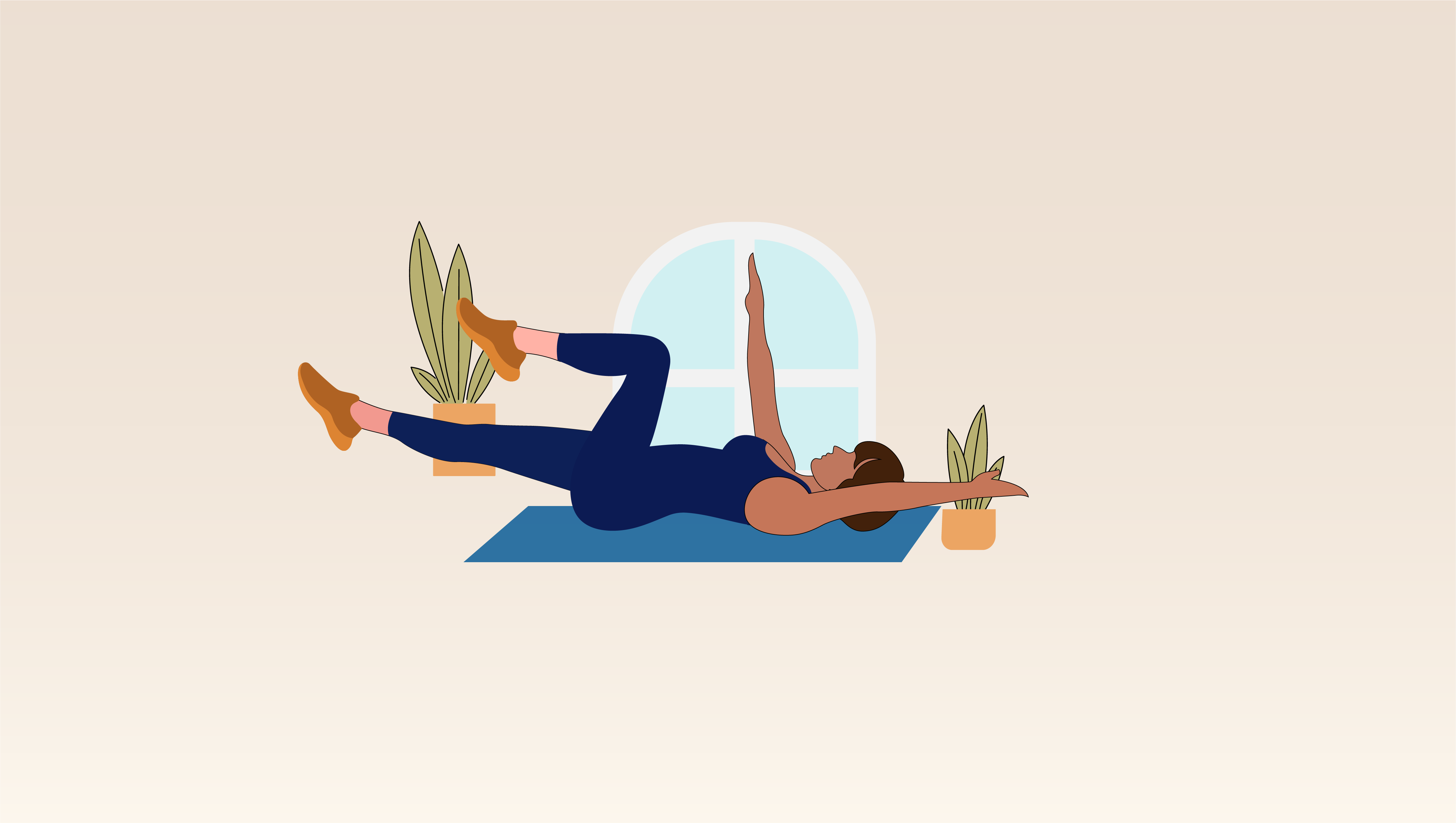The dead bug exercise is one of the most effective core-strengthening moves you can add to your routine. It targets multiple muscle groups within the core and helps improve stability and coordination—two things that are essential whether you’re working out or just getting through a physically demanding day.
What is the Dead Bug?

The dead bug exercise gets its name from your position while performing it—lying on your back with arms and legs raised like a bug flipped upside down. Despite its quirky name, the dead bug exercise is incredibly effective at building core strength and protecting your lower back. It focuses on controlled movements of opposing limbs to help activate the deep core muscles that play a key role in keeping your spine safe and your posture solid.
What muscles does the dead bug work?
While the exercise may not look difficult, it should light up your core muscles when performed correctly. It’s not just about flailing your arms and legs around—it’s about controlling the descent of each limb while keeping your spine in a neutral position the whole time. This puts all the tension on the core muscles and fires them up to stabilize your hips and spine.
Here’s a breakdown of the key muscles that get involved during the dead bug:
- Internal and external obliques: These muscles, located along the sides of your abdomen, help with twisting movements and stabilize your core during the exercise.
- Rectus abdominis: Often referred to as the “six-pack” muscles, the rectus abdominis helps you bend forward and maintain core stability.
- Transverse abdominis: This deep core muscle acts like a corset, supporting your spine and keeping your midsection braced.
- Erector spinae: These muscles run along your spine and help with posture and control the movement of your back.
- Multifidus: These small muscles near your spine work with the erector spinae to stabilize your back during movements.
- Pelvic floor muscles: While they often go unnoticed, these muscles play a crucial role in stabilizing your core from the bottom up, especially during the controlled movements of the dead bug. Strengthening these muscles is hugely important for women who have had children.
By hitting all these muscle groups, the dead bug builds a solid foundation of core strength that can benefit anyone, whether in the gym, lifting at work, or simply trying to maintain better posture throughout the day.
Why the dead bug should be part of your workout
Core control
One of the dead bug’s main advantages is that it trains your core to resist movement rather than create it. The exercise engages deep abdominal muscles like the transverse abdominis, which act like a natural brace for your spine. This control is essential not just for workouts but for daily activities like lifting or bending, keeping your back protected and your core stable.
Stability
By performing alternating arm and leg movements while maintaining a stable core, the dead bug challenges your ability to keep everything balanced. This helps build greater overall stability, which is especially useful if your work or hobbies involve sudden, dynamic movements.
Reduces pain
Lower back pain is a common issue for people in the construction industry, whether from long hours of sitting or physical labor. The dead bug strengthens muscles that support the spine, helping to alleviate and prevent lower back pain. Research has shown that core stability exercises like the dead bug effectively reduce the risk of injury to the lower back.
Coordination
The dead bug requires you to move opposite limbs simultaneously, engaging your brain and body in a coordinated effort. This cross-lateral movement pattern helps improve neuromuscular coordination, which is crucial for balance and athletic performance. Plus, better coordination can translate into more fluid movements in daily life.
How to do the dead bug
The dead bug exercise is straightforward when done correctly. Often, people make adjustments or small mistakes during the execution of the move that release the tension from the core muscles. To avoid this, here’s a breakdown of how to perform it correctly:
- Lie on your back: Start by lying on your back on a mat in a neutral position. Lift your arms straight up so they’re perpendicular to the floor (wrists over shoulders), with your palms facing each other.
- Bend your knees: Bring your knees up so they’re bent at a 90-degree angle with your shins parallel to the floor. Your thighs should form a right angle with your torso.
- Engage your core: Squeeze your core before proceeding with the movement, but avoid pressing your back into the mat. You want your lower back to remain in its natural position while preventing excessive arching during the exercise.
- Opposite arm and leg movement: Slowly lower your right arm toward the floor behind your head while extending your left leg straight, lowering it toward the floor. Keep both movements slow and controlled, ensuring your lower back remains pressed into the floor instead of arching.
- Return to start: With control, bring your arm and leg back to the starting position and repeat on the opposite side (left arm and right leg). Alternate sides for the desired number of repetitions, usually around 8-10 per side.
Avoid these mistakes
While the dead bug exercise is simple, common mistakes can reduce its effectiveness or even lead to injury. Here’s what to watch out for:
- Excessively arching your back: One of the most frequent mistakes is allowing the lower back to take on some pressure by overextending. This happens when the core is not engaged enough to stabilize the pelvis. Instead of benefiting your abs, this puts unnecessary strain on your lower back. To avoid this issue, keep your core braced, keep your back in a neutral position, and only extend your limbs as far as possible while maintaining that position.
- Moving too fast: The dead bug exercise isn’t about speed. Going too quickly can shift the focus away from your core, allowing momentum to take over. This reduces the effectiveness of the exercise and increases the chance of poor form. Slow, controlled movements are key. Take your time to focus on contracting your abdominal muscles throughout the entire movement.
Variations on the traditional dead bug
The dead bug exercise is versatile and can be modified to suit various fitness levels and goals. Once you’ve mastered the basic version, try incorporating these variations to keep your routine fresh and further challenge your core muscles.
Ipsilateral dead bug
This variation adds more complexity by moving the same arm and leg simultaneously rather than the opposite ones. The ipsilateral dead bug forces you to work harder to maintain balance and control, as your body naturally wants to tilt or rotate. It’s an excellent option for building deeper coordination and core engagement.
Weighted dead bug
You can add weights to increase the difficulty and engage more muscle groups. You can hold dumbbells in your hands or attach wrist and ankle weights. The extra resistance forces your core to work harder to stabilize the movements, making this a solid progression for those looking to advance their core strength.
Exercise ball dead bug
Use a stability ball between your hands and knees for an extra stability challenge. As you extend your opposite arm and leg, you must press into the ball with the other limbs to keep it from falling. This variation ramps up the intensity and further tests your coordination and core control.
Bottom line
The dead bug exercise is a deceptively simple exercise that offers immense benefits, particularly when building a stable, pain-free core. Whether you’re just getting started with fitness or looking to add more advanced variations, this movement is a fantastic addition to any routine. It targets deep core muscles and helps improve coordination, balance, and even posture. Best of all, it’s low-impact and can be done anywhere without equipment. So, whether you aim to prevent back pain, strengthen your core, or improve overall body control, the dead bug is a must-try.



1 comment